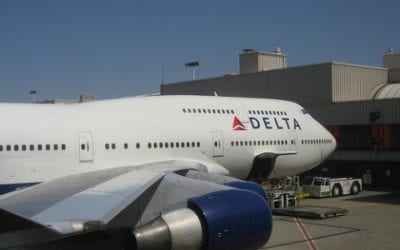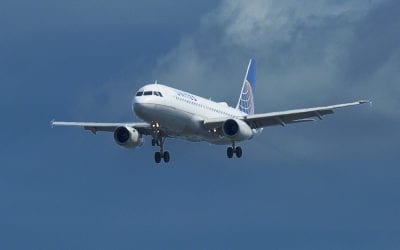This is the first in a series of articles about my work for travelers through the Consumer Travel Alliance (CTA). This organization is a tax-exempt non-profit, so any donations are fully tax deductible. We have been working in Washington, DC, for about a year now and have had some significant successes. Anyone who has worked through Congress and regulatory agencies in our nation’s capital, knows how very long most bureaucratic actions take.
I have found that government workers are a talented and good group who will work with average citizens to change rules for the better whenever they can without Congressional action. And sometimes, mid-level government workers at the FAA, FTC, DOT and others have a lot more power to make small, but important, changes than anyone realizes.
Last summer, Joe Sharkey, writing in his blog, noted that some flight attendants were enforcing a new-to-him rule that nothing could be placed in seat pockets during take-off and landing except airline magazines and emergency instructions. The airline crack-down was spread through the Internet on blogs and in newspaper articles.
Nothing, she said. Not a pair of eyeglasses or a newspaper or a paperback book. Only “company-printed materials” were allowed in seat-back pockets, she said, and of course I quote her precisely.
What were these strange new “FAA regulations”? My seat-mate — a hard-core business traveler and until then a stranger to me — and I looked at each other. Surely this could not be a new law. But before takeoff, here the flight attendant comes marching down the narrow aisle on inspection, and right away she spots the books each of us had tucked into the pockets, as we had done thousands of times before.
She was on us like a prison guard. “Gentlemen, I told you, nothing in the pockets,” she said. Sheepishly, we put our books in our laps, while the “company-printed materials” (the crappy in-flight magazine, the sales catalog, the barf bag and who knows what else) rode merrily alone in the seat-back pockets.
I wrote about this problem and found the actual paragraph in the regulation that mandated “nothing can be stowed in the seat pockets except magazines and passenger information cards.”
The next step was to find the person at the Federal Aviation Authority (FAA) who was responsible for that sentence in the FAA regulations. Eventually, I found her, called her and the Consumer Travel Alliance sent her an email requesting that she take a look at the rule and issue a clarification.
Here is the query from the Consumer Travel Alliance email to the FAA:
It seems that a solution might be to state that magazines, passenger information cards, airsick bags, paperback books and light personal articles such as cell phones, PDAs, baby bibs, glasses etc. are permitted. There may be a question whether food should be permitted and heavy items such as laptop computers would probably be prohibited.
A new common-sense directive would go a long way to eliminating the current cabin confusion, uncertain flight attendants and irritated passengers.
Two months later, I received an email from the FAA informing me that the rule had been clarified.
This FAA InFO letter was issued, “To clarify guidance for air carriers about the stowage of items in seat pockets.”
The intent of the carry-on baggage regulation, Title 14 of the Code of Federal Regulations (14 CFR) part 121, § 121.589, is to prevent carry-on items from slowing an emergency evacuation and to prevent injury to passengers by ensuring items are properly restrained. Seat pockets have been designed to restrain approximately 3 pounds of weight and not the weight of additional carry-on items. Seat pockets are not listed in the regulation as an approved stowage location for carry-on baggage. If a seat pocket fails to restrain its contents, the contents of the seat pocket may impede emergency evacuation or may strike and injure a passenger.
If small, lightweight items, such as eyeglasses or a cell phone, can be placed in the seat pocket without exceeding the total designed weight limitation of the seat pocket or so that the seat pocket does not block anyone from evacuating the row of seats, it may be safe to do so.
The requirements of the carry-on baggage regulation are applicable to take-off and landing. Nothing in the carry-on baggage regulation prohibits a passenger from taking out small personal items from an approved stowage location and placing them in the seat pocket after takeoff and stowing them in approved locations prior to landing. Crewmembers may still direct a passenger to stow carry-on items in an approved stowage location, during flight should they pose a hazard, such as in the case of turbulence.
It is a small issue, but by quietly working with regulators, the Consumer Travel Alliance encouraged the FAA to make a common-sense change to a rule that made travel more pleasant for all travelers.
Consumer Travel Alliance is a member of the Consumer Federation of America. Our work is supported by consumer traveler member donations. We are asking for $25 a year to help us work to make the travel experience better. If you can help with a bigger donation we are happy to accept — send me a message at [email protected]. $25 membership donations are accepted online.

Charlie Leocha is the President of Travelers United. He has been working in Washington, DC, for the past 14 years with Congress, the Department of Transportation, and industry stakeholders on travel issues. He was the first consumer representative to the Advisory Committee for Aviation Consumer Protections appointed by the Secretary of Transportation from 2012 through 2018.




